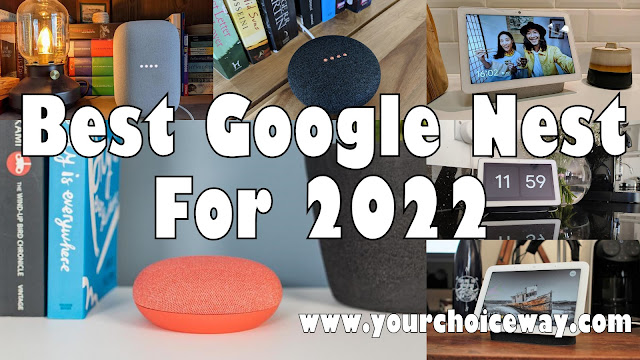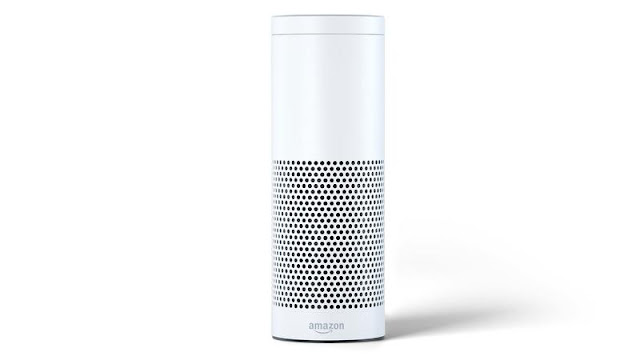The Uxbridge is Marshall’s latest smart speaker, joining the Acton II Voice and Stanmore II Voice. "Thunderous sound" is right.
Pros
- Amazon Alexa
- Excellent sound
- Supremely stylish
Cons
- Heavy
- Google Assistant sold separately
Our Verdict
- The Marshall Uxbridge effuses style and packs powerful sound. Alexa support along with Spotify Connect, Apple AirPlay 2, and customisable sound all add to the charm.
Price When Reviewed
- £199
The Uxbridge is the newest smart speaker to join Marshall's smart speaker line of amp lookalikes, which currently consists of the larger Acton II Voice and Stanmore II Voice.
We reviewed the model that offers Amazon Alexa support, but Marshall also offers a model that uses Google Assistant instead.
The Uxbridge is undeniably gorgeous, but does it surpass simply being quirky eye-candy for gig-going fans? We find out.
Design & Build
Marshall unapologetically rejects the space-age minimalism that drives the Amazon Echos and Google Nests' designs and swings towards cultural nostalgia instead: by packing smart features into its classic amp. The Uxbridge looks sleek, combining stylish elegance with a rugged rock 'n’ roll charm. I just wish I could plug in my guitar.
Across the front, you get a woven grill cloth, much like you would on an actual amp – fully emblazoned with the iconic Marshall logo, while four short legs keep the unit sturdy.
It’s a compact cube when you look at it, measuring 128 x 168 x 123mm, roughly the size of a four-pack of beer. This makes it slightly larger than its competitors, the Amazon Echo 3, which measures 148 x 99mm and the Google Home which measures 143 x 96mm, both of which are about the size of a pint glass. (I might as well use beer-related size references when the device is so rock 'n' roll).
At the top of the Uxbridge, you’ll find the volume as well as bass and treble rockers, all in an attractive copper finish. These are joined by a Play/Pause button and a mic mute button. Surprisingly, Marshall put the Bluetooth button on the back of the device, where you may expect a power switch – however, there isn’t a power switch. The only way to turn it off is to unplug it. It's no doubt a conscious decision that Marshall wants you to have the speaker on at all times, with Alexa (or Google) always on stand-by (more on Alexa below).
On that note, the Uxbridge operates only from the power mains, so it’s not intended to be portable. In fact, at 1.39kg it outweighs both the Echo 3 (780g) and Google Home (477g), which are lithe in comparison.
If you prefer portability, Marshall offers the Stockwell II, Kilburn II and Tufton II – though these lack smart functionality. For a battery-powered speaker, the waterproof Marshall Emberton packs 20 hours of battery life and 360-degree sound. See Marshall's full speaker collection.
Also see our shortlist of the best Bluetooth speakers of 2020
Along the Uxbridge's base, you'll find four LED lights similar to what you would find on an Echo device. These sit on a brushed copper panel and indicate levels – whether that's volume, bass, or treble. The lights also turn blue when Alexa is active.
Marshall Voice App
Setting up the Uxbridge was straightforward. You’ll need to install the Marshall Voice app (free on Android and iOS) and connect to the speaker via Bluetooth. The Uxbridge offers Bluetooth 4.2 connectivity, so you can only connect to one device at a time.
While you don't need the Marshall Voice app to use the speaker once it's set up, you do need for in-app equalization (for this you'll need to stay connected to the Uxbridge via Bluetooth).
The Marshall Voice app also allows you to add the Uxbridge to your Wi-Fi network. You’ll have to separately install the Amazon Alexa app, however, to bring smart connectivity to the speaker.
Amazon Alexa & Spotify Connect
Once Alexa is connected via the Alexa app, you don't need to configure it again – it is available as soon as you plug in the speaker. Again, if you prefer the Google ecosystem, there's also an Uxbridge with Google Assistant.
In terms of Alexa's performance, I had to speak loud and clear for a response. Alexa doesn't always understand what you mean and will rattle on to a misunderstood question. It helps to speak slowly and to pause after calling Alexa before asking a question.
The Uxbridge only offers a dual-mic set-up. In comparison, the budget Google Nest Mini has three mics, and Amazon Echo Dot 3 offers four mics. While Alexa responded to me from the living room as I shouted a song request from a room away in the kitchen, the mic might strain to hear you if you're too far away.
Keep in mind the Uxbridge is a multi-room speaker so you can buy one for each room of the house to save you from having to bark orders.
If you only ever use one Uxbridge, it's clear Marshall wants you to use it from within the same room. The speaker is meant for enjoying an album while lounging in the living room, or streaming playlists to entertain guests. As a smart speaker, you don't need to be tethered to your phone via Bluetooth, so anyone in the room can request what plays next.
Spotify Connect only takes this further by allowing you access to songs outside the Amazon Music repertoire. Connecting was effortless, and I was easily able to bounce between my phone and laptop to play songs from Spotify. Apple users will also be happy to find that the Uxbridge supports AirPlay 2.
The Uxbridge’s 54Hz - 20,000Hz frequency range is slightly shorter than your average loudspeaker’s range of 45Hz - 20,000Hz, but the sound it delivers is incredibly clear and warm.
Let’s not forget: Marshall has been in the business of sound long before Amazon and Google.
The low range is particularly impressive. The bass resonates with a velvety smoothness, without suffocating the trebles and middle – which means vocals aren't drowned out but complemented. The result is rich, room-filling audio.
While the range sits mostly in the bass and middle, you can easily boost the trebles using the rockers at the top of the speaker. For more delicate tuning, you can go into the Marshall Voice app, which includes presets for various genres including spoken for podcast fans.
With this level of customisation, the Uxbridge can handle almost any genre you throw at it – though unlike rock, reggae, or pop which often feature a driving bass, softer genres like piano or classical can sound slightly muted.
Marshall hasn’t revealed much about the size of its driver apart from it being a 30W Class D amplifier for the woofer and tweeter, but the speaker is undeniably loud, gaining a maximum volume of 96 dB. There is mild distortion in the upper range when the Uxbridge is on blast, but you will never need to listen to it that loud.
Price And Availability
The Uxbridge is available in black or white directly from Marshall for £170/US$199/AUD$284. You can also find it on Amazon and Currys PC World.
Marshall also makes a version with Google Assistant at the same price, also available in both black and white.
The price puts it in a similar range as the Sonos One (£199/$199) which remains one of the best smart speakers around. The Sonos One offers both Alexa and Google Assistant support, so you're not tied to one ecosystem at the point of purchase. There are of course cheaper smart speakers available too, but what you pay for with the Marshall is the design and easily customisable sound.
Verdict
The Uxbridge is impressive. Marshall backs the speaker's iconic look with great sound, keeping it from being just an amusing novelty with passable audio.
Alexa connectivity is an added bonus, though can be fickle at times. If smart connectivity is your objective in a speaker purchase, you might be better off with the Echo Studio (£189.99/US$229.98) which is on the premium end of the Echo range, with superior audio to the Echo 3. Also, keep in mind, non-Echo speakers may not always offer all the same functions as Amazon's own devices.
If instead, you want a speaker that packs personality and powerful sound and is sure to impress friends with an iconic look, you can't go wrong with the Marshall.
Specs
- Size: 128 x 168 x 123 mm
- Frequency range:54-20,000 Hz
- 30 Watt Class D amplifier
- Wi-Fi (WPA/WAP2, 802.11a/b/g/n/ac 2.4GHz/5GHz)
- Bluetooth 4.2,Spotify Connect
- Airplay 2




















0 comments:
Post a Comment